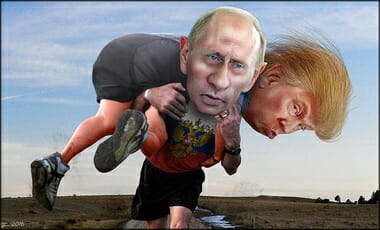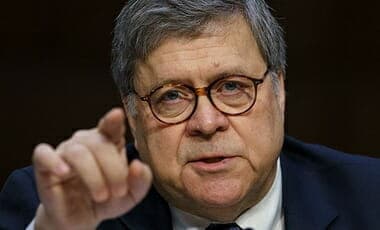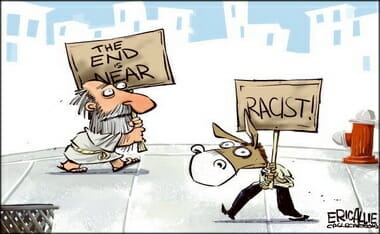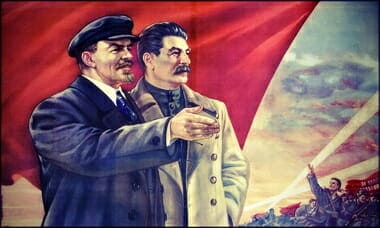One commentator says this: “Now, Brian Williams is on the air at MSNBC complaining about ‘Fake News’. That’s rich!”
Author: Papa Giorgio


Another MSM Story Down in Flames
If there was one thing I have learned over the years of attacks against Bush over eight years, and now Trump… the rule of thumb is to wait about a week (or more) for the truth of the situation to come out. This is a prime example. Many who have a visceral hatred for Trump immediately jump on the band wagon [just like BDS, Bush Derangement Syndrome — there is TDS, Trump Derangement Syndrome]… and… the below meme is a prime example.
During conversation with a Facebook friend about a meme posted regarding the Dianne Feinstein with Attorney General Bill Barr, I linked the FULL exchange to the exchange. After some talk, the below meme was posted:
Not a day after he posted the above, a writer I check in with daily had this post, entitled: “NBC NEWS MAKES CORRECTION TO TRUMP-PUTIN STORY.” In it she notes:
After incorrectly reporting that President Trump had discussed former White House counsel Don McGhan’s potential testimony in the House with Russian President Vladimir Putin, NBC News was forced to issue a correction:
CORRECTION (May 3,2019, 1:51 p.m. ET): An earlier version of this article incorrectly included one topic that White House press secretary Sarah Sanders said Presidents Trump and Putin discussed on Friday. They did not discuss the possibility of former White House counsel Don McGahn appearing before Congress. Sanders was answering a question from reporters about whether McGahn would testify before Congress.
HILARIOUS. I bet “unnamed sources” are at the center of this story. You can add this to the TRUMP IS CHUMMY WITH PUTIN conspiracy the Left and NeverTrumpers have:
Secretary of State Michael Pompeo said the U.S. has a full range of options available to help oust Venezuelan President Nicolas Maduro and didn’t rule out “ultimately” using military action on top of diplomatic, political and other pressure points.
“We’re preparing those for him so that when the situation arises, we’re not flat-footed,’’ Pompeo said on ABC’s “This Week,” one of three scheduled appearances on Sunday morning political shows.
[….]
Trump on Friday said Russian President Vladimir Putin assured him he isn’t seeking to “get involved” in the crisis, although Pompeo and National Security Adviser John Bolton both said earlier in the week that the Kremlin talked Maduro out of leaving Venezuela after U.S.-backed Guaido attempted to end his regime by calling for a military uprising.
“The president has made clear, we want everyone out, and that includes the Russians,” Pompeo said.

Fear of Barr (Strassel)
HUGH HEWITT reads Kimberly Strassel’s column, earlier today:
A little POWRLINE intro please: The Democrats’ hysteria over Attorney General William Barr is directly proportional to their fear of the damage they fear he might do, Kim Strassel explains in her Wall Street Journal Potomac Watch column HERE:
The only thing uglier than an angry Washington is a fearful Washington. And fear is what’s driving this week’s blitzkrieg of Attorney General William Barr.
Mr. Barr tolerantly sat through hours of Democratic insults at a Senate Judiciary Committee hearing Wednesday. His reward for his patience was to be labeled, in the space of a news cycle, a lawbreaking, dishonest, obstructing hack. Speaker Nancy Pelosi publicly accused Mr. Barr of lying to Congress, which, she added, is “considered a crime.” House Judiciary Committee Chairman Jerrold Nadler said he will move to hold Mr. Barr in contempt unless the attorney general acquiesces to the unprecedented demand that he submit to cross-examination by committee staff attorneys. James Comey, former director of the Federal Bureau of Investigation, lamented that Donald Trump had “eaten” Mr. Barr’s “soul.” Massachusetts Sen. Elizabeth Warren demands the attorney general resign. California Rep. Eric Swalwell wants him impeached.
These attacks aren’t about special counsel Robert Mueller, his report or even the surreal debate over Mr. Barr’s first letter describing the report. The attorney general delivered the transparency Democrats demanded: He quickly released a lightly redacted report, which portrayed the president in a negative light. What do Democrats have to object to?
Some of this is frustration. Democrats foolishly invested two years of political capital in the idea that Mr. Mueller would prove President Trump had colluded with Russia, and Mr. Mueller left them empty-handed. Some of it is personal. Democrats resent that Mr. Barr won’t cower or apologize for doing his job. Some is bitterness that Mr. Barr is performing like a real attorney general, making the call against obstruction-of-justice charges rather than sitting back and letting Democrats have their fun with Mr. Mueller’s obstruction innuendo.
But most of it is likely fear. Mr. Barr made real news in that Senate hearing, and while the press didn’t notice, Democrats did. The attorney general said he’d already assigned people at the Justice Department to assist his investigation of the origins of the Trump-Russia probe. He said his review would be far-reaching—that he was obtaining details from congressional investigations, from the ongoing probe by the department’s inspector general, Michael Horowitz, and even from Mr. Mueller’s work. Mr. Barr said the investigation wouldn’t focus only on the fall 2016 justifications for secret surveillance warrants against Trump team members but would go back months earlier.
He also said he’d focus on the infamous “dossier” concocted by opposition-research firm Fusion GPS and British former spy Christopher Steele, on which the FBI relied so heavily in its probe. Mr. Barr acknowledged his concern that the dossier itself could be Russian disinformation, a possibility he described as not “entirely speculative.” He also revealed that the department has “multiple criminal leak investigations under way” into the disclosure of classified details about the Trump-Russia investigation.
Do not underestimate how many powerful people in Washington have something to lose from Mr. Barr’s probe. Among them: Former and current leaders of the law-enforcement and intelligence communities. The Democratic Party pooh-bahs who paid a foreign national (Mr. Steele) to collect information from Russians and deliver it to the FBI. The government officials who misused their positions to target a presidential campaign. The leakers. The media. More than reputations are at risk. Revelations could lead to lawsuits, formal disciplinary actions, lost jobs, even criminal prosecution.
The attacks on Mr. Barr are first and foremost an effort to force him out, to prevent this information from coming to light until Democrats can retake the White House in 2020. As a fallback, the coordinated campaign works as a pre-emptive smear, diminishing the credibility of his ultimate findings by priming the public to view him as a partisan.
That’s why Mr. Barr isn’t alone in getting slimed. Natasha Bertrand at Politico last month penned a hit piece on the respected Mr. Horowitz. It’s clear the inspector general is asking the right questions. The Politico article acknowledges he’s homing in on Mr. Steele’s “credibility” and the dossier’s “veracity”—then goes on to provide a defense of Mr. Steele and his dossier, while quoting unnamed sources who deride the “quality” of the Horowitz probe, and (hilariously) claim the long-tenured inspector general is not “well-versed” in core Justice Department functions.
“We have to stop using the criminal-justice process as a political weapon,” Mr. Barr said Wednesday. The line didn’t get much notice, but that worthy goal increasingly looks to be a reason Mr. Barr accepted this unpleasant job. Stopping this abuse requires understanding how it started. The liberal establishment, including journalists friendly with it, doesn’t want that to happen, and so has made it a mission to destroy Mr. Barr. The attorney general seems to know what he’s up against, and remains undeterred. That’s the sort of steely will necessary to right the ship at the Justice Department and the FBI.

You Want Real Collusion? Here Ya Go:
I hope the peeps are following the latest by:
- MOLLIE HEMINGWAY: New York Times Admits Obama Admin Deployed Multiple Spies Against Trump Campaign In 2016;
- CHUCK ROSS: Stefan Halper’s ‘Assistant’ In Papadopoulos Spy Operation Has Been Outed
- SARA CARTER: FBI Texts Show Agents Discussed Recruiting White House Sources To Spy For Bureau
- JOHN SOLOMON: Ukrainian embassy confirms DNC contractor solicited Trump dirt in 2016 | Nellie Ohr’s ‘Hi Honey’ Emails to DOJ Should Alarm Us All
Here is the segments from Hannity w/John Solomon and itthe lead up:

The Washington Post Steps In It Again #FakeNewsHeadline
Larry Elder dismantles the Washington Post’s VERY misleading headline, “Mueller Complained To Barr About His Summary Of Russia Probe.” You have to read to the 13th paragraph to read this:
- “…nothing in the Attorney General’s March 24 letter was inaccurate or misleading…”
(DAILY WIRE | PJ-MEDIA)
Talk about FAKENEWS HEADLINES!
I added some video of Ted Cruz, as well as James Evans Jr. (JJ from the CBS television series Good Times) — WHY YOU ASK — because when “the Sage” acted out Bill Barr calling Mueller, it reminded me of this. I add Stewie Griffin from Family Guy for good measure in my “video ‘added emphasis’.”

Who Are the Racists?
To call someone a racist is a serious charge. A racist is someone who believes that one person is superior (or inferior) to another person simply based on their skin color. It’s a belief that is both foolish and stupid. But conservatives are accused by progressives of being racist on an almost daily basis. Is it a fair accusation? Or, is it just political posturing? And, if it is political posturing, what does it say about the people making the charge? Derryck Green of Project 21 has some provocative answers.

Stalin Type Tactics – Looking For Crimes (UPDATED)
<< UPDATE >>
LEGAL INSURRECTION has an excellent post showing the political witchunt continuing in “Uber-Left” New York Attorneys office. The quote following this update comes alive moreso because of this:
The New York Attorney General’s Office, and now the state legislature, are targeting a political opponent: Donald Trump, his family, his businesses, and his allies.
The State government in New York has become part of the #Resistance to Trump, and not just on policy issues.
The law enforcement and legislative functions have been co-opted to target Trump because he is a political enemy. In the war on Trump, important norms are being broken. It’s disgusting and dangerous.
The most prominent norm being broken is by the new Attorney General, Latitia James, who campaigned on the promise to use the full force the the State’s law enforcement powers to target Trump and his family:
“We will use every area of the law to investigate President Trump and his business transactions and that of his family as well”
Such targeting of Trump didn’t start with James, she was following up on similar targeting by former (and disgraced) AG Eric Schneiderman and interim AG Barbara Underwood. We documented this long line of Democrat New York Attorney Generals weaponizing the Office for political purposes We wrote about it in December 2018, Incoming NY Attorney General vows to use full power of the State to get Trump.
Since taking Office, James has held true to her promise to target Trump, as CNN reported in early April 2019, The New York AG’s first 100 days of war against Trump:
So far, her office has subpoenaed two banks for records related to Trump Organization projects and has continued to pursue a lawsuit against the Trump Foundation, alleging it violated state and federal charities law. Asked by CNN about the lawsuit, Donald Trump Jr. dismissed it, saying there was “nothing to talk about — more nonsense.” She’s even pushed for the state assembly to pass legislation that would allow her office to pursue state charges for anyone the President pardons on federal charges…
Her office’s pursuit of tax records and details of President Trump’s businesses, along with efforts by federal prosecutors in Manhattan, could be critical leading into the re-election campaign as the Mueller investigation has ended and House Democrats are only now accelerating their investigations….
“I will never be afraid to challenge this illegitimate President,” James said during her campaign.
“Most of his business activities are performed in New York,” James told MSNBC earlier this month. “He engages in business in New York. He operates in New York. And it’s really critically important that New Yorkers, and as taxpayers … that we understand and know whether or not he devalued his corporations and he received some tax benefits thereof. That he engaged in false claims against New Yorkers and as a result of that we are seeking to see what we can do legally.”
James’ reference to “this illegitimate president” ends any doubt that she is politically motivated, not motivated by legitimate law enforcement concerns. The NY Attorney General’s Office has identified the political target, now it is searching for the crime…..
[….]
It’s said that “Power tends to corrupt and absolute power corrupts absolutely.”
In New York State, Democrats and #TheResistance to Trump have absolute power. Unless the Courts stop this abuse of that power, we will see absolute corruption of the state government apparatus to get a political enemy.
Lavrentiy Pavlovich Beria, head of Stalin’s secret police. He told Stalin,
- “Show me the man and I’ll find you the crime.”
Even Bill Maher thinks it is stalking… when you have lost Maher you have lost:
…Maher, who has called Trump a traitor for his conduct, told his guest on Real Time that the American people weren’t into “details” as he wondered if Democrats had missed their shot.
“But this was our big gun,” Maher said. “Now it just looks like you’re stalking him, I think, in the eyes of the people who don’t follow it that closely, which is most of the country.”…
SEBASTIAN GORKA ON THE ISSUE:
This is the video of the audio played above:

Man Sets Four Female Powerlifting Records (War on Women)
THE BLAZE explains the below horror: “Powerlifter Mary Gregory — a biological male competing as a transgender female — announced Saturday on Instagram setting four women’s world records in one day at a Raw Powerlifting Federation event: Masters world squat, open world bench press, masters world deadlift, and masters world total.”
MOONBATTERY reminds us that this is just the latest “woman’s sport” to fall:
It isn’t just powerlifting. Transgender moonbattery has had a similar effect on handball, football, wrestling, mixed martial arts, basketball, and every other sport where men are allowed to compete as women for the sake of political correctness.
Women’s sports records are now meaningless.
THE BLAZE continues in noting that “Mary” thanked some of the following people:
- “As a transgender lifter I was unsure what to expect going into this meet and everyone — all the spotters, loaders, referees, staff, meet director, all made me welcome and treated me as just another female lifter,” Gregory added. “Thank you!”
He forgot to thank “Nature,” God, or both.

When “Spying” Was Acceptable To The MSM
NEWSBUSTERS notes well how the current media blames the use of “spying” as a “right-wing” term. Except, just weeks ago they were using it handily…
Cable news talking heads suffered a collective conniption on Wednesday at Attorney General William Barr’s continued use of the word “spying” in reference to an FBI informant in the Trump campaign. Yet many of those melting down over this so-called “loaded language” had previously (repeatedly) used that same term in reference to the FBI’s surveillance of former Trump campaign official Carter Page.
On the day of Barr’s testimony before the Senate Judiciary Committee, CNN law enforcement analyst Josh Campbell did his best to explain precisely why everyone was suddenly treating “spy” like a curse word. “It’s only used to refer to what foreign governments do to us, for example when you’re trying to stop foreign spies, foreign threats,” he pontificated as the panel nodded approvingly.
Over at MSNBC, host Brian Williams was evidently appalled by Barr’s chosen terminology:
Obviously, what we just saw there was an attempt by [Senator] Sheldon Whitehouse to nail down this Attorney General on the charge of shilling for the President who appointed him. Spying, being a word preferred by the Trump right-hand side of the media to describe authorized surveillance techniques by the government the United States.
[….]

Venezuelan Brochure (Burge)

Larry Elder At 2019 Los Angeles Times Festival of Books
(I swear Larry is a robot!) April 14, 2019 – Author and radio show host Larry Elder took viewer phone calls at the 2019 Los Angeles Times Festival of Books.

Seattle Crane Collapse (Tragic)
Sad
New video shows the moment a crane collapsed in South Lake Union Saturday afternoon. Four people were killed when part of a crane from the construction site of a future Google building fell onto traffic below.
Scott Gaines was on his way to work when the dashcam in his car captured the collapse.
The Seattle Fire Department said one woman and three men were dead before the first firefighters arrived at the scene. Seattle Public University confirmed that freshman student Sarah Wong was one of the victims.
Emergency crews responded to the scene at Mercer Street and Fairview Avenue in the South Lake Union neighborhood around 3:30 p.m.
“It’s a horrible day in Seattle when something like this happens right in the heart of our city,” Mayor Jenny Durkan said. “Most people have driven down this road at some time in their lives. But it’s a time when we come together because Seattle is a city that rallies around each other.”
Several people told KING 5 that they witnessed crews working to dismantle the crane earlier in the day.
The Washington state Department of Labor and Industries is leading an investigation into the cause of the crane collapse.
Tim Church, a spokesperson for Labor and Industries, confirmed investigations into four companies: GLY Construction, subcontractors Northwest Tower Crane and Omega Morgan, and Morrow Equipment Company.
Half of the cranes in the state of Washington are in Seattle.



